10 Highest Rated Motorcycle Tires for 2021 Reviewed
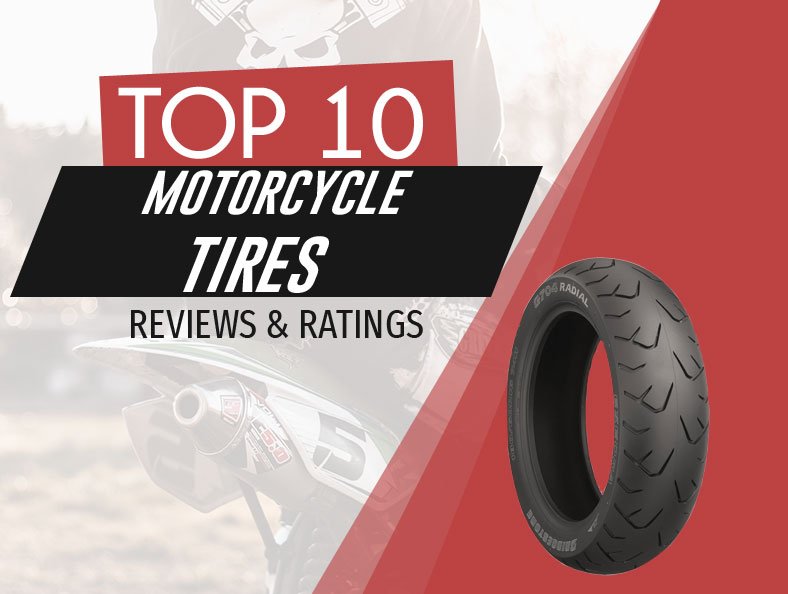
Road Racerz is proudly supported by our readers. Products purchased through links on our site may provide us a commission. Learn More
What do you think it’s the most important part of your bike? Many people think of the engine when they talk of performance, but there’s more to it than that.
While you need a great engine and reliable brakes, you also need a quality set of motorcycle tires. They are considered one of the most vital components of all two-wheelers by many professional and amateur riders.
Tires handle the job of taking the bike to the streets. It’s what stands between you and the road, so their quality is utterly important.
Read below to discover some of the greatest motorcycle tires and general info on how to choose the best pair.
10 Top Rated Motorcycle Tires Compared
| PRODUCT | FEATURES | |
|---|---|---|
Bridgestone 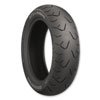 | Bridgestone Features: Specific rubber compound provides long mileage Type: Touring-type | Check Price |
Michelin 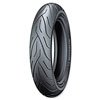 | Michelin Features: Rubber compounds provide remarkable wet grip Type: Touring Tires or Cruiser | Check Price |
Metzeler  | Metzeler Features: All-weather tire, good for stability Type: Touring Tires or Cruiser | Check Price |
Continental 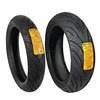 | Continental Features: For dry and wet roads, long life Type: Touring-type | Check Price |
Dunlop 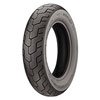 | Dunlop Features: Excellent balance of mileage and grip, Ideal for wet pavements Type: Touring-type | Check Price |
Duro 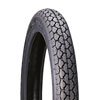 | Duro Features: Works on wet and dry pavements, durable thanks to the 4-ply construction Type: Touring-type | Check Price |
Shinko 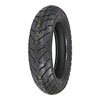 | Shinko Features: H rated tubeless, 4 ply nylon carcass, for different road surfaces Type: Touring-type | Check Price |
Pirelli 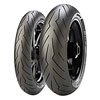 | Pirelli Features: For all weather conditions, great grip on different roads Type: Sport-Touring | Check Price |
Heidenau 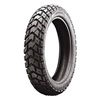 | Heidenau Features: Easy to maneuver across a wide range of surfaces, suitable for off-road surfaces Type: Dual sport type | Check Price |
Razor 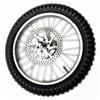 | Razor Features: Entire front wheel requires replacement, suitable for off-road conditions Type: Dual sport type | Check Price |
Bridgestone – Best Support
These are the original tires you received if you drive a Honda GL1800, so they’re best used as replacements. However, the set is also a replacement for Honda GL1500.
Being that they’re designed for Honda’s line of Goldwing touring bikes, you can be sure to receive quality. Honda is a well-known name in the industry, and they probably won’t entrust their bikes to just about anyone.
These are made to provide long mileage without making too much noise at high speeds like most models on touring bikes. The trick is in the specific rubber compound that handles high speeds much better.
The unique, wide shape of its profile reduces fatigue and supports all touring-type riding. Keep in mind that these are among the most high-quality, but they’re also one of the most expensive.
PROS
- Solid handling for heavier bikes
- Ideal for high speeds
- Low road noise
CONS
- Not as versatile (designed for Honda)
Michelin – Best Durability
Michelin is a well-known brand that produces an outstanding lineup of tires for years already. And this set, called the Commander II is one of the best-selling models altogether.
Since it was released, the set has been a choice of many loyal riders due to its outstanding endurance and performance.
These are durable and resistant, but they also have an impressive grip. This is why many riders prefer them for riding in wet weather. They offer excellent stability and maneuverability.
Another thing worth noting is their versatility. The set is quite versatile, but in most cases, riders use it for Harley Davidson bikes.
And, while you get quality, balance, and durability, it doesn’t come at a high price. Although it’s one of the top-rated brands, Michelin is quite in the middle of the average price range.
PROS
- Great handling and steering
- Providing smooth rides
- Increase in braking and cornering
CONS
- Significantly wider than other similar tires
Metzeler – Best for Heavy-touring
If you’re into heavy touring motorcycles, you might want to try this for your next set. These are a high-mileage model meant specifically for the abovementioned type of bikes.
Although the brand isn’t as well-known as Michelin or Bridgestone, it’s getting there thanks to its high-tech looks and tread patterns.
Metzeler improved the tread design of these tires to provide more efficient water drainage. In return, this lets you brake and handle wet roads much better. You’ll notice easier handling on both at high as well as low speeds, with your stability level intact.
With these, you get stability, water drainage, and superior longevity.
In fact, these seem to last for a longer time than most competitive tires out there.
PROS
- Great for both high and low speeds
- All-weather
- No visible wear for several thousand miles
CONS
- A bit higher in profile
Continental – Best Long-lasting
This Continental set is a bit different than the most. It’s an entry-level tire, but many people who started with it actually stuck on with the brand.
The first thing to note is the overall affordability of the set. And, even though it’s on the affordable side of the spectrum, it will last you a long time.
Its quality reflects in how long it can withstand continuous use before showing any signs of wear whatsoever. You’ll get several thousands of miles to go before it starts showing some signs of wear, and even then, it’s only the tread that might wear down.
This set will improve your stability and maneuverability with its radial construction.
It has excellent mileage and amazing traction regardless of the weather you ride in.
PROS
- Doesn’t show signs of wear as quickly
- Provides smooth rides and easy handling
- Great value for money
CONS
- They take time to break in
Dunlop – Best Water Dispersion
Another critical thing to mention is the size.
Dunlop is probably one of your best choices if you’re looking for a touring tire. Although the brand isn’t as popular as some bigger names, it still makes quality options for a wide range of riders.
It has a tread compound that provides great grip, mileage, and balance. Both front and rear tread patterns are designed to deliver excellent water dispersion, which is exactly what you’ll get.
As such, the tire is one of the best choices when it comes to riding in wet weather. On top of that, its bias-ply construction helps deliver smooth riders and overall comfort on the road.
These fit on every compatible bike, so you probably won’t have any issues breaking them in quite quickly.
PROS
- Excellent straight-line stability
- Ideal for wet pavements
- Reliable traction and grip
CONS
- They tend to wear out quickly
Duro – Best Vintage
Finding vintage tires isn’t as simple nowadays. However, this Duro option is one of the best choices if you have an old-style bike.
What makes it vintage is the fact that it works both as a front and rear tire. Old styles of motorcycles use the same size for both, making this Duro a good choice.
Make sure to check your bike’s compatibility because these are somewhat smaller than modern designs. They weigh only 6 pounds, but they’re quite durable thanks to the 4-ply construction.
You’ll notice that the tread design is quite old-fashioned, but it performs well in different weather conditions and road types.
Keep in mind that these won’t work for every type of motorcycle, but will for most of the vintage ones.
PROS
- Lightweight
- Good grip
- Works on wet and dry pavements
CONS
- Not as versatile
Shinko – Best Quality
If you’re looking for a new front tire, you might want to check if this Shinko would fit. Although Shinko probably isn’t the first name you think of when looking for tires, you should know that the company has been around since 1946.
This is an entry-level option that’s designed to work on a 19-inch rim. It has a unique tread pattern, delivering enough stability and grip in different weather conditions. On top of that, it works on various road types as well.
Shinko describes this as a staggered pattern, designed to resist water as much as possible, providing grip on different surfaces.
With this one, you’ll experience a stiff but smooth ride due to the 4-ply Nylon carcass. Keep in mind that its maximum speed is at 130mph which should be enough for most bikes with 19-inch rims.
PROS
- Excellent value
- Great tread etching
- For different road surfaces
CONS
- A bit tricky to balance
Pirelli – Best Performance
Pirelli is another high-quality brand known all around the world. And its Diablo Rosso 3 is one of the best rear tires you can get if you’re looking for a high-performance piece.
It’s a 100% silica compound with different levels of grip featured across the profile. This means that the edges are much softer than the middle, which helps with riding in different conditions.
Thanks to their overall construction, they perform rather well in smooth and rough roads. On top of that, you can rely on them in wet and dry weather conditions.
The split rubber compound is also something we should mention as it provides a combination of mileage and traction in all the right places.
It’s a rear tire performing as a medium-grip in regular cornering and a straight line.
PROS
- Large footprint
- For wet and dry weather
- Great grip on different roads
CONS
- Not for above 100mph
Heidenau – Best Stability
This is a dual sports tire, which means that you can use it as a rear or front tire, depending on what you need. In most cases, it’s used with off-road motorcycles.
It has a deep tread, digging into the soft surfaces with ease. As a result, it’s quite gripping and easy to maneuver across a wide range of surfaces.
Although it’s a sports tire suitable for off-road surfaces, it’s equally as ideal for highways and paved roads.
Overall, it’s quite easy to work with, especially since you can use it as both rear and front.
On top of that, it works well in different weather conditions, so you don’t have to worry about the loss of grip or balance on wet roads.
PROS
- Rear and front use
- For different road surfaces
- Great grip
CONS
- A bit pricey
Razor – Best Off-road
If you’re an off-road biker and enthusiast, you might want to consider this Razor front wheel assembly. It’s a great set of things you need in case your entire front wheel requires replacement.
The package includes a 16×2.4 inches knobby tire, wire-spoke wheel, inner tube, axle, and a disc brake rotor. Apart from that, you’ll need a few more tools to install the wheel.
Overall, it itself performs rather well on different road surfaces. Its tread design provides a particularly aggressive grip, which makes it suitable for off-road conditions. However, it does fairly well on smoother surfaces, as well.
It’s a durable, and you’ll probably go some miles before it shows any signs of wear.
PROS
- For wet and dry weather
- Comes as a part of a whole assembly
- Easy to install
CONS
- Some people didn’t receive the brake rotor
Shopper's Guide - Choosing the Right Motorbike Tires
As we mentioned, several parts and components have a significant role in how your bike performs. However, none comes as close to being as important as motorcycle tires.
With great tires, your bike has a higher chance of keeping up with your use. Nonetheless, people shop for rubber in many different ways.
While some prefer to go for a particular brand, others like to experiment a bit more. Now, regardless of which type of buyer you are, you should know the importance of having reliable quality tires.
As we said, it’s the part that’s directly connected to the road. For this reason, it’s quite critical for your safety, and your safety should be your number one priority.
Keep in mind that every rider has a different riding style. As a result, each individual may need a different type of tire that would be suitable for a particular kind of riding. For example, touring and commuting are much too different, which is why these riders usually go for different tires.
On the other hand, people who enjoy speed need a specific rubber that can keep up with that. Since riding at high speeds is already far more dangerous, the importance of having reliable tires is that much more significant.
Sport bikes require particular tires which can perform calmly during the vigorous speeds and different road conditions.
In the guide below, we’ll discuss everything you need to know about motorcycle tires and how to choose the best ones for you. Some of these features are important for everyone, regardless of the riding style or the bike model.
More Reading: Changing a Motorcycle Tire – Installing Your Replacement

Features to Consider
Tube vs Tube-Less
The first thing you’ll want to consider is whether you need a tube tire or a tubeless one. Tubeless tires are somewhat more popular recently, and that’s mostly due to their stronger and stiffer construction.
Also, tubeless models tend to withstand punctures for a longer duration as opposed to their counterparts. The reason for this is because they deflate slowly.
In most cases, they’re safer to a certain degree because they’re fixed more tightly to the rim.
On the other hand, tube tires require some specialized equipment to fix a puncture. They’re a bit trickier to get off the rim, but are nonetheless, quite reliable.
Tube tires are also somewhat cheaper, especially lately, since many brands came out with more affordable models. However, make sure always to buy the OEM tire, provided by the manufacturer.
Choosing one or another depends on the bike you ride and your preference. You might want to consult a professional if you’re a beginner and unsure which to use.
Type
As you probably noticed, there are many different types and models on the market. This is because every kind of motorcycle is different, so it’s only logical that they’d need different tires.
Although they look quite similar, there’s always a difference in size, tread design, and many other things depending on the bike and style.
For example, tires meant for cruiser bikes aren’t such a great choice for a street motorcycle. For this reason, try to go for the exact recommended type. If you don’t, you may not be satisfied with how the model of your choice performs.
Sport Tires
Sport tires are specifically intended for high-performance street bikes and lightweight sport bikes. They’re designed to deliver precise handling along with great edge-to-edge grip.
They’re light and made of softer compounds that can provide the said grip, allowing you to lay your motorcycle deep into corners. On top of that, some tires come with a more pronounced center line making it easier to transition from side to side.
In most cases, they don’t have as much tread lines, but they can still do well in wet conditions. Manufacturers use multi-compounds to provide both traction and good mileage wear. These, however, probably won’t last you as long as cruiser tires.
Ideally, these are meant for people who spend a lot of time on the road. They shouldn’t wear out as quickly, but that depends on the overall quality of the tire you choose.
Sport-Touring
These are considered a mix between sports and touring tires. They’re optimized to bring the best of both, including great traction and long mileage.
In many cases, these are ideal for riders who spend a lot of time cross-country touring, but also burning corners. Still, their durability and longevity make them a good choice for light sport bikes that spend time on highways as well as mountain roads.
Most sport-touring tires have dual compounds and a softer rubber on the sides. This ensures excellent grip, especially when cornering. A harder compound is in the center patch, and it’s meant to provide a stable ride and long mileage.
Also, these tend to perform well in wet conditions thanks to their design. They’re meant to drive water from the contact patch, which helps the overall stability. Finally, you can expect traction as well as smooth handling throughout the life of your tires.
Touring Tires or Cruiser
Touring and cruiser tires are the robust type that’s designed to hold up heavy bikes. These are meant to deliver long mileage while performing great in good weather.
You can find them on anything from Harley Davidson Softtail and Dyna bikes, Yamaha Rider, Styker, and Bolt models and Kawasaki Vulcan motorcycles to Honda Gold Wing models.
Keep in mind that these are meant for heavy bikes, which is why they have stiffer sidewalls. This enables them to handle the more massive weight of your motorcycle, saddlebags, trunks, and other gear. They can handle quite a lot thanks to their construction, but that is only if you choose a quality piece.
Also, these have more tread depth, which, combined with harder compounds, means more mileage and less wear. But, because of their unique construction, these tires are quite bulky and significantly heavier than other types of tires.
Dual Sport/ADV Tires
ADV and dual-sport tires stand out, so we’re sure you’ll recognize them the moment you see them. These are DOT approved and meant to handle off-road use with greater performance.
They have knobs that give you the much-needed grip in mud, rocks, dirt, and sand. As a result, you can ride on different road surfaces.
Now, if you’ve been researching these tires, you’ve probably noticed their intended use is often listed in percentage. So, for example, a particular model might come as 70% off-road / 30% on-road.
This tells you what the primary purpose of the particular tire is. Those that are more aggressive usually have a higher off-road percentage as opposed to those that are less aggressive.
Keep in mind that some heavy ADV bikes such as the KTM Super Adventure 1250 has tires meant to handle heavy weight and perform the best on highways.
Size
Although many people prefer to go for the largest size possible, this isn’t always the right thing to do. In other words, every motorcycle has a precise tire type and size you should use.
Buying the opposite of what the manufacturer recommends can put you in a bad position. Sometimes, people buy large and wide tires for whatever reason without actually being aware of the consequences.
All bikes have an intended contact patch area required to give smooth and soft cornering. Going for a bigger size than what you need creates a larger contact batch area. As a result, increased contact will affect the transmission quite negatively.a
You should keep in mind that there’s no other way of going about this. Choosing larger tires will require a wider rim, but then you’ll also have to replace the belt and drive gear for them to match your selected tires.
Tread Pattern
Many people will argue that a tread pattern has a lot to do with how the tires perform on a certain type of road. In other words, deeper grooves and larger treads tend to deliver a better grip as opposed to those with smaller treads.
While this isn’t entirely wrong, there’s much more to the pattern than just that. Precisely, these tread blocks are meant to act as a channel for the water so that there’s minimal loss of friction.
They’re not there purely for the design and décor. These channels are great if you often ride in wet conditions, allowing water from the road to go through them. It stops the water from laying on the surface of the tire, causing it to be slippery.
While they’re helpful during rainy seasons, they can be a bad thing in dry conditions. Deeper grooves decrease the contact patch between the tire and the road. As a result, this can weaken the overall grip.
In most cases, you’ll have to decide for yourself, depending on the type of road you use the most. Many professionals claim that the build material has more to do with the grip than the actual groove size.

Which is Better? Radial vs. Bias-ply
The main difference between the radial and bias-ply tires is in the belt construction. The two often also have different cord materials, either nylon or steel.
Radial tires run cooler and are steel-belted. These have a longer tread life and a wider footprint. On the other hand, bias-ply tires have a crosshatch construction that provides tougher sidewalls. They’re often also more affordable than the radial ones.
Choosing one depends on what type of rider you are. If you’re enjoying long and regular trips, you might want to try the radial type. If you’re into short trips and infrequent use, you should opt for the bias-ply type.
Read the Specifications on the Tire Wall
The specifications of the tire might be in alphanumeric or metric form. They’re found on the side of the tire.
If your tire has 170/90 R15 67 W written on the wall, it means that it’s 170mm wide. This is section width. The number after the slash mark is the aspect ratio of the tire size. In the example mentioned above, the height makes 90% of its width.
Keep in mind that there’s a relation between the aspect ratio and the size of the sidewall. The next comes the information about the construction. In our example, the “R” stands for radially arranged layers.
If it were a bias sized tire, the letter would be replaced with “B”. In our example, the number 15 is the diameter measured in inches.
The “67 W” speaks for the load index of the tire. The number 67 identifies the potential to bear a load of 661 pounds with proper inflation. The “W” is for the speed rating.
The speed rating is stated in kilometers per hour and tells you how compatible the tire is according to the top speed of your bike. The “W” in our example is a good rating for the tire with a maximum speed of 160 miles per hour.
This is critical information if you’re looking to buy the right and most suitable tires for your bike. It makes it easy to make the most of them at the highest speed limit.
Overall, these specifications might seem a bit complicated to read, but you won’t have any issues once you figure out what each letter and number mean.
Another important info is the one on the manufacturing date. This is a four-digit mark that’s equally as easy to read. The first two numbers state the number of the week while the next two state the year that the tire was made in.
This is probably the most vital information you should know how to read. Other things like “WW” for white walls may or may not be relevant to you, but it’s definitely not as critical.
Durability
This is something you should consider since you don’t want to invest in tires that will wear out quickly.
The exact mileage and durability you can get out of a particular model depend on many things, from build quality to materials. Manufacturers used to sacrifice grip for better mileage, but premium brands managed to overcome the issue.
Tires with the multi-compound formulation and a harder material strip in the center usually last a long time thanks to their increased straight-line mileage.
Puncture Protection
A punctured tire is always an issue for several reasons. Not only it results in lots of time wasted, but it actually causes momentum loss as well.
Luckily, tires have different levels of puncture protection. In most cases, manufacturers use an extra layer of material to fight the problem. This is often made of rubber or another specialized fabric and is called a puncture protection belt.
Another thing that might help against punctures is TPI (threads per inch). It’s somewhat a rule that the higher the TPI, the better fabric was made for the casing. This also means a denser weave, which has a better chance of withstanding a puncture for a longer time.
Frequently Asked Questions
How long do motorcycle tires last?
Motorcycle tires cannot last as long as those meant for cars. The rubber is also softer, and the contact patch is much smaller.
So, tires that are older than five years should be annually inspected by a professional. Manufacturers recommend that all tires that are ten years old should be replaced even if the tread looks good.
Still, some can come to the end of their useful life before they hit the ten-year mark. It depends on how the tread looks, so you should check that from time to time. If you don’t have at least 1/32” or 2/32” of tread depth, it’s time for a new set.
Read More: How Long Will Motorcycle Tires Last? Here Are the Signs
What brand is best for cruisers?
Cruisers are unique motorcycles, so you want to be careful when buying tires. These bikes are heavy and have loads of torque and high horsepower.
For such a bike, you need a high load rating, stability, and maybe even sharp handling. Luckily, they come in different sizes, making it somewhat easier to find a fitting set.
While it’s hard to tell what brand is the best, several do stand out in the market. Brands like Dunlop, Continental, and Bridgestone, are some good names to consider if you have a cruiser.
What is best for sport touring?
Again, it’s a bit difficult to name the exact best brand, but there are a few that are well-known for their quality.
Brands like Pirelli, Michelin, Continental, and Bridgestone make some great sets for sport touring. Keep in mind that much depends on what bike you have as well.
Conclusion
If you came this far, you probably have a good idea of what makes a tire suitable for a particular bike. Finding the top motorcycle tires doesn’t have to be as difficult if you pay attention to all the necessary buying factors.
Keep in mind that having a suitable tire is essential for your safety. It helps make rides smoother and more comfortable as well, which is equally as vital.
For this reason, take time and maybe go through the information above one more time before choosing some of the tires we reviewed.
















